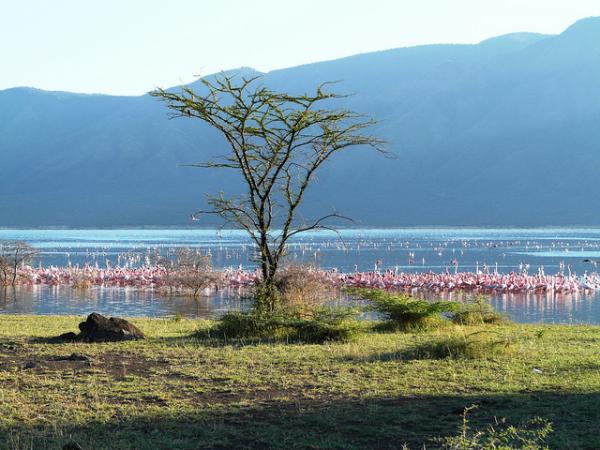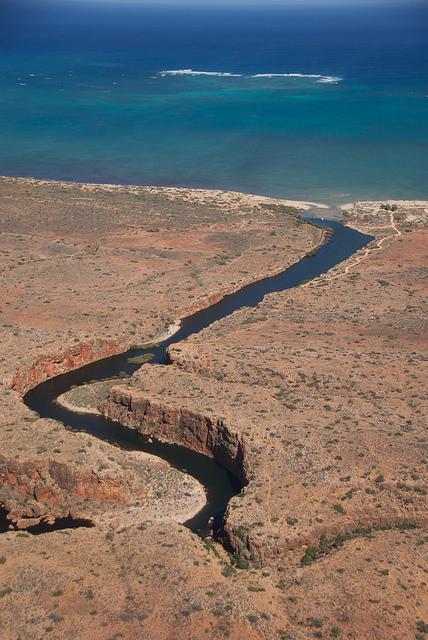
New Protected Sites Added to World Heritage List

From the lakes in Africa's Great Rift Valley to the Ningaloo Coast in Australia, new additions to the United Nations' list of World Heritage Sites were announced June 23 at a meeting in Paris.
The UN began to recognize World Heritage sites in 1972 in order to protect cultural and natural heritage. A site can be named a World Heritage site if it has a special cultural or physical significance, such a forest, lake, desert, mountain or building.
UNESCO's World Heritage Committee administers the list, and nature sites are nominated by the independent International Union for Conservation of Nature (IUCN). The IUCN presented its evaluations of nominated sites to the World Heritage Committee last week. With the new additions the number of natural and mixed sites (those that also host a human-created element) now stands at 211.
The Ogasawara Islands in Japan, the Wadi Rum Protected Area in Jordan and the Ancient Beech Forests of Germany have also been approved by the World Heritage Committee.

First African site since 2007
The Kenya Lakes System consists of three lakes: Lake Elementaita, Lake Nakuru and Lake Bogoria, all of which lie in basins on the floor of the Great Rift Valley, which transects Kenya in a north-south direction. The three lakes are an integral part of one of the largest bird migratory routes in the world. The area sustains 75 percent of the global population of the lesser flamingo species, supports one of the major breeding colonies of the great white pelican and provides a vital wintering ground for more than 100 species of migratory birds.
"It is wonderful to see these spectacular lake sites in Kenya, and their rich bird life, achieving recognition as natural sites of the highest global importance," said Tim Badman, director of the World Heritage Program. "We especially welcome this inscription as the first natural World Heritage Site listed in Africa since 2007."
Sign up for the Live Science daily newsletter now
Get the world’s most fascinating discoveries delivered straight to your inbox.
The Ningaloo Reef on the northwestern coast of Australia is home to the largest fish in the world, the whale shark, as well as to more than 500 species of tropical fish and 220 species of coral. The rich marine life includes soft and hard corals, manta rays, sea snakes, whales, turtles, dungeons and sharks. Australia is the country with the largest number of natural World Heritage Sites in the world.
"The Ningaloo Coast is a unique place with outstanding natural beauty and biological diversity, which plays an important role in the protection of marine species," Badman said. "The Coast tells an extraordinary story of biological isolation, climate change, the movement of continents and environmental conservation."
Located in the western Pacific Ocean roughly 610 miles (1,000 kilometers) south of the main Japanese Archipelago, the Ogasawara Islands are an example of ongoing evolutionary and biological processes in oceanic island ecosystems. The newly inscribed site includes more than 30 islands and marine areas clustered within three island groups and is home to over 140 endemic plants and animals.
Human and nature
The Wadi Rum Protected Area in Jordan, a mixed natural and cultural site, is located in the southern part of Jordan close to the border with Saudi Arabia and forms a major part of the Hisma Desert. The highly varied desert landscape is the product of millions of years of geological processes, and thousands of years of interactions between humans and nature in a hostile desert environment . The human settlements in Wadi Rum go back 12,000 years.
"Wadi Rum is composed of scenically stunning natural and cultural attributes in a lived-in desert environment where geology has been the ever-present artist," said Allen Putney, vice-chair for World Heritage of IUCN's World Commission on Protected Areas. "IUCN welcomes this inscription and hopes that it will lead to enhanced protection and management of the site."
At the Paris meeting, the IUCN said that extractive industries and governments that license their activities should commit to stopping all mining and oil and gas exploration and exploitation activities that could damage World Heritage Sites. As a result of the impacts of mining and oil/gas projects, sites can be inscribed on the List of World Heritage in Danger, which identifies serious and imminent threats to existing sites and mobilizes much-needed support from the international community to address these. In extreme cases, mineral exploration and mining can lead to the removal of a site from the World Heritage List.
Today, about one in four African natural and mixed World Heritage sites is threatened. This is an increase from 16 percent in 2009.
"We are seriously concerned that African natural World Heritage sites, many of which are already inscribed on the List of World Heritage in Danger , are increasingly threatened by mining and oil/gas projects," said Mariam Kenza Ali, IUCN's World Heritage conservation officer.
"Fortunately, these projects are still at the planning stage, which means that governments, mining and oil/gas companies, financial backers and other stakeholders have a window of opportunity to make the right decisions for future generations by committing to preserving these outstanding sites and thereby also safeguarding the livelihoods of local people and Africa's long-term sustainable development," Ali said.










